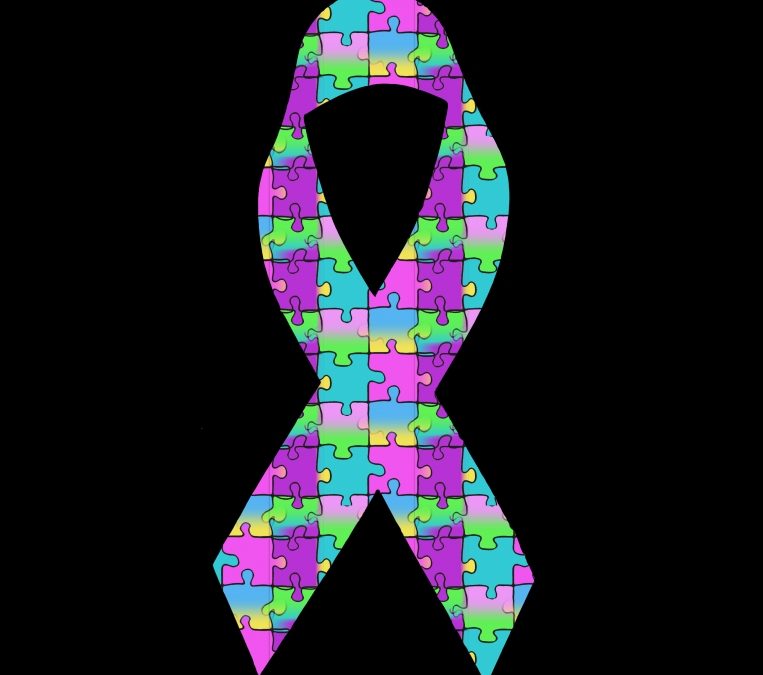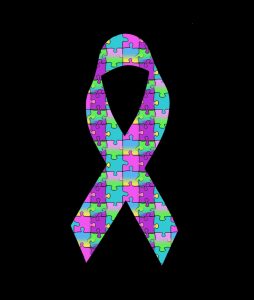A lot of people who are not familiar with autism tend to associate it with the 1988 movie “Rain Man”, played by Dustin Hoffman. That is until they are faced with it themselves. Whether they discover that their child has it, a good friend’s child or a relative. I know that I would have not known about it if my son, Jordan didn’t have it. However, he does and as a result, I have learned a lot about autism. Now I am here to help teach others.
Autism is a neurodevelopment or neurobiological condition and it is highly variable. This means that no two people with autism are the same. However, every individual with autism do share common characteristics. These characteristics exist along what is called the Triad of Impairment.
The Triad of Impairment consists of significant deficits across three developmental areas:
- Verbal and non-verbal communication impairment
- Social impairment
- Impairments of thinking and behaving
Communication Impairment
Significant deficits in communication are present, to one degree or another, in all people with autism. They may have problems is using speech (expressive language), ranging from having no speech at all (which makes about 20% of cases) to have speech that is quite well developed. They tend to repeat words spoken to them which is also called echolalia, or will repeat phrases they associate with something they want such as, “Do you want to eat” instead of “I want to eat”. They will also have deficits in understanding speech which is the receptive language. Confusing between sounds of words can be present like meet vs. meat. They also have difficulty with irony, sarcasm and humour. You will see that being the case frequently found in those with expressive language that is well developed. They may have problems understanding when an object has more than one meaning such as a soup bowl or a toilet bowl.
Jordan has speech, and can get his point across quite well. However, he definitely has difficulty with irony and sarcasm. He takes things way too literally like many others who are under the autism spectrum as well.
People with autism also can have significant difficulty with modulating their tone of voice and putting expression into what they say. They can sometimes sound robotic and speak with a droning monotone. Sometimes they can emphasize the intonation of certain words with unnecessary force. They can be either too loud, or they sometimes can be too quiet. Jordan is definitely like this.
It is important to recognize that communication is more than speech. Non-verbal communication is important for human social interaction to proceed the way it should. People with autism have deficits in understanding non-verbal communication such as not being able to interpret facial cues, or to use it themselves. They may have odd and unusual body posture and gestures. They may not understand other people’s body posture and gestures as well. Interestingly enough, my son is pretty good with this area.
Social Interaction Impairment
There are several sub-types of behaviours that characterize this group of people with autism. They can be quite aloof where as they would behave as if other people did not exist at all. They also tend to make little or no eye contact and have faces that seem to lack any emotional display whatever. Less common is the passive group who will accept the advances of others, can be led to participate as a passive partner in an activity and who return the eye contact of others. Another sub-type has been called the “active but odd group”. These people pay no attention to others, have poor eye contact and may stare too long and often shake hands far too vigorously and strongly. The last sub-type is the overly formal and stilted group. They tend to use language in a very formal way when it is not called for. They can be excessively polite and try to stick to the rules of social interaction but don’t really understand anyway. They tend to have well developed language skills that can mask their real social deficits. Jordan actually loves to interact. He says “hello” to everyone he sees. However, he definitely still has a lot to learn when it comes to what is acceptable and not acceptable in social situations.
Impairment of Thinking and Behaving
People with autism have pronounced difficulty with play or imagination. The lack of the ability to play has a profound effect on them being able to understand the emotions of others. Therefore sharing joy or sorrow with others can be impossible. Repetitive and stereotyped movements or activities are often present in autism. They may want to taste, touch or smell things over and over again. They may have a need to twirl things before their eyes. Sometimes they may jump up and down and make loud noises. This behaviour is called stimming which my son loves to do. He is aware enough to stim in private though which is a good thing because he is becoming self aware. In more severe cases they may bang their heads against walls or floor or pull and scratch at their skin. People with autism have a strong need for consistency and routine. They become unsettled when routine changes. All these behaviours and characteristics point to a pronounced inflexibility in thinking and behaving.
Although every person with an autistic spectrum disorder has deficits in all three parts of the triad each varies significantly in the nature of their deficits. This makes is imperative for people working with children with autism to individualize their interventions. Autism is a highly variable condition, and as two people who have it will be affected quite differently.
Problems that Usually Accompany Autism
In addition to deficits across the triad there are a number of problems often associated with autism. However, it is not known yet if they are caused by autism itself. Among the most common are epileptic seizures (particularly in adolescence), sensory integration deficits (difficulty integrating the reception of sensations such as sound, sight, taste, hearing or movement), general learning disabilities, Fragile X syndrome (about 2-5% of people with an ASD), tuberous sclerosis (benign tumours in the brain or other organs and this occurs in about 2-4% of people with an ASD), ADHD, Tourette’s syndrome and dyslexia. Proper treatment of autism must include appropriate treatment of any associated condition as well.
Educating Children with Autism
Many children with autism can be educated in the mainstream school with appropriate support. These support typically include speech and language therapy, occupational therapy, ABA (applied behaviour therapy), psychological services and special education. Because they perceive the world differently from those around them, they will benefit by being placed in a mainstream classroom because they can observe how their typical peers behave. The other children in the case will also benefit from having children with autism in their classes because that is a great way to teach them about compassion and tolerance.
As said previously, people with autism vary to an enormous degree. As they progress through the educational system, the types of support they require and the intensity of these support can vary as well. It is very important to recognize that children with autism can be educated and can reach their optimum level of potential. The task may be difficult and progress may be slow but progress will be made when the support is present and everyone involved will work cooperatively together.
However, when autism is severe and accompanied by extremely challenging behaviour such as aggression, self-harm, and complete lack of language- the education that is being provided often must take place in a specialized setting. The goal in these settings is to attempt to re-integrate the child back into the mainstream setting. For children whose autism is extremely severe, psychiatric services may be required as an adjunct to the educational program.
People with autism can be educated, and many of them can enter the work force. Sometimes they can work quite independently and be successful with it. At other times they may require the support of a job coach, and in some cases may need sheltered work settings. Like entering the work force, there are some people with autism can live independent lives. However many do require structured and supported accommodation. If the autism is still severe when the individual reaches adulthood, they will need to be in a group home setting where 24/7 care is available.
No one really knows what causes autism. Some believe that childhood vaccines are responsible. I yet have to see concrete proof of this. My belief is that genetic factors definitely play a role, as well as environmental. More boys than girls are affected as well, and the ratios are increasing every year. I remember when 1 in 150 children were diagnosed. Now, it is 1 in 68! There is a lot of work that needs to be done in order to determine the causes of autism.




Connect With Me !